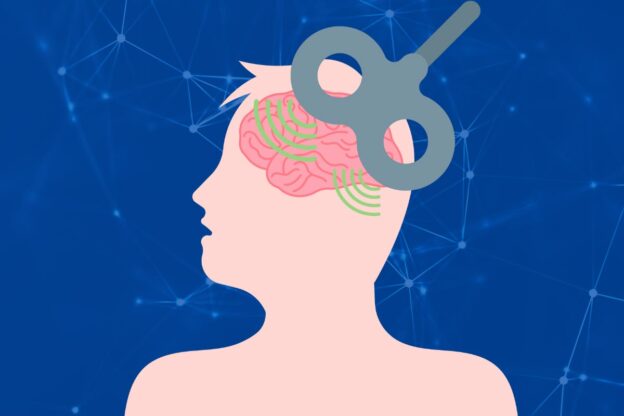Substance abuse remains a pressing public health concern, with its devastating consequences reverberating across individuals, families, and communities.
Amidst the ongoing efforts to combat this epidemic, Transcranial Magnetic Stimulation (TMS) has emerged as a novel therapeutic approach, offering promise in the realm of substance abuse treatment.

This article explores the efficacy of TMS in addressing substance use disorders (SUDs), delving into its mechanisms of action, clinical applications, empirical evidence, and future implications. the same experiences in other ways.
Understanding Transcranial Magnetic Stimulation (TMS)
Transcranial Magnetic Stimulation is a non-invasive neuromodulation technique that harnesses magnetic fields to modulate neural activity in targeted regions of the brain. By inducing electrical currents, TMS can influence neurotransmitter systems, synaptic connectivity, and brain circuits implicated in addiction, providing a unique avenue for intervention.
Mechanisms of Action
The therapeutic mechanisms of TMS in substance abuse treatment are multifaceted. By targeting key brain regions associated with reward processing, craving, and executive control—such as the dorsolateral prefrontal cortex (DLPFC), the ventromedial prefrontal cortex (vmPFC), and the nucleus accumbens—TMS can disrupt maladaptive neural patterns, restore balance to dysregulated circuits, and mitigate the reinforcing effects of drugs.
Moreover, TMS may exert its effects on cognitive and emotional processes implicated in addiction, including decision-making, impulsivity, and cue reactivity. Through the promotion of neuroplasticity and the modulation of neurotransmitter systems—such as dopamine, glutamate, and gamma-aminobutyric acid (GABA)—TMS offers a comprehensive approach to addressing the complex neurobiological underpinnings of substance use disorders.
Clinical Applications

TMS has demonstrated efficacy in targeting various substances of abuse, including alcohol, nicotine, cocaine, opioids, and methamphetamine. Clinical trials investigating TMS as a treatment modality for SUDs have yielded promising results, with improvements observed in craving intensity, substance consumption, and abstinence rates across different populations.
1. Alcohol Use Disorder (AUD): Studies have shown that repetitive TMS (rTMS) targeting the DLPFC or the vmPFC can reduce alcohol craving and consumption, enhance abstinence rates, and improve overall treatment outcomes in individuals with AUD.
2. Nicotine Dependence: TMS interventions focused on the DLPFC have been found to decrease cigarette craving, withdrawal symptoms, and smoking behavior, offering a potential aid for smoking cessation efforts.
3. Cocaine Addiction: Preliminary evidence suggests that TMS targeting the DLPFC may attenuate cue-induced craving and reduce cocaine use in individuals with cocaine dependence, highlighting its potential as an adjunctive therapy in cocaine addiction treatment.
4. Opioid Use Disorder (OUD): While research on TMS for OUD is relatively limited, early findings suggest a potential role in mitigating opioid craving and withdrawal symptoms, thereby supporting medication-assisted treatment (MAT) and relapse prevention strategies.
Get Your Questions Answered Now
Empirical Evidence and Clinical Efficacy

The efficacy of TMS in substance abuse treatment is supported by a growing body of empirical research. Meta-analyses and systematic reviews have consistently demonstrated the superiority of active TMS over sham stimulation—a placebo control used in TMS trials—and its potential to augment standard treatment approaches for SUDs.
For instance, a meta-analysis by Terraneo et al. (2016) evaluated the effects of rTMS on craving and consumption in individuals with AUD, comprising 10 studies with a total of 277 participants. The analysis revealed significant reductions in alcohol craving following rTMS treatment, with greater efficacy observed in high-frequency stimulation protocols targeting the DLPFC.
Similarly, a systematic review by Dinur-Klein et al. (2014) examined the efficacy of rTMS in nicotine dependence, encompassing 12 studies with a total of 420 participants. The findings indicated a significant reduction in cigarette craving and smoking behavior following rTMS treatment, particularly when targeting the DLPFC bilaterally.
Considerations and Challenges
Despite its potential, several considerations and challenges warrant attention in the integration of TMS into substance abuse treatment protocols. Access to TMS therapy may be limited by factors such as cost, availability, and insurance coverage, posing barriers to widespread adoption, particularly in underserved populations.
Moreover, individual variability in treatment response necessitates personalized approaches to TMS intervention, with careful consideration of patient characteristics, substance use patterns, and comorbid psychiatric conditions. Furthermore, optimizing TMS protocols—including stimulation parameters, target sites, and treatment duration—remains an ongoing endeavor to maximize therapeutic outcomes and minimize adverse effects.
Future Directions and Implications
The future of TMS in substance abuse treatment holds significant promise, with ongoing research endeavors aimed at elucidating its mechanisms, refining treatment protocols, and expanding its therapeutic repertoire. Advances in neuroimaging, neurophysiology, and personalized medicine are expected to enhance our understanding of addiction neurobiology and inform targeted interventions tailored to individual patient needs.
Moreover, the integration of TMS with other modalities—such as pharmacotherapy, psychotherapy, and behavioral interventions—holds potential synergistic benefits, offering a comprehensive approach to addressing the multifaceted nature of substance use disorders. Collaborative efforts between researchers, clinicians, and policymakers are essential to harnessing the full potential of TMS in combating the global burden of addiction.
Conclusion
Transcranial Magnetic Stimulation represents a promising frontier in substance abuse treatment, offering a safe, non-invasive, and effective adjunctive therapy for individuals grappling with addiction. While further research is warranted to optimize treatment protocols, refine patient selection criteria, and enhance treatment accessibility, the burgeoning evidence base underscores TMS’s potential to transform the landscape of addiction care, offering hope and healing to those affected by substance use disorders.
TMS or Transcranial Magnetic Stimulation is an FDA approved treatment and Stairway Resources Center is proud to offer it as part of our toolkit. If you want to learn more, contact us about using Transcranial Magnetic Stimulation for addiction treatment or dual diagnosis treatment.

